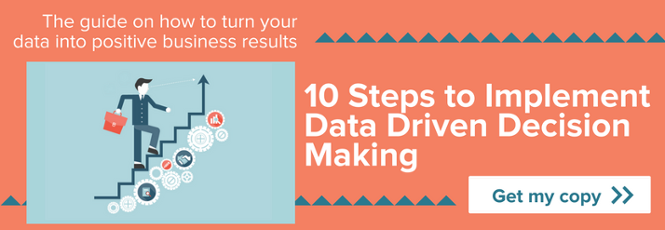How to Use Employee Performance Dashboards to Inform Employee Development

Managing employees and gauging their success is a fundamental part of a business’s success. While you’ve likely got a team of managers, or team leaders, overseeing employee utilization and day-to-day performance, how you’re tracking employee performance over the long term is essential to determining whether employee development goals are being met, both individually and across your organization. In fact, 74% of employees suggest they’re not working up to their full potential and so it should be any business’s goal to learn how to develop the assets they have in their employees. It’s one reason why employee performance dashboards should be included in your employee development strategy.
Quick Links
- What is an employee dashboard?
- How can employee dashboards be used to measure employee performance and utilization?
- 5 ways HR departments can use employee performance dashboards to assess talent needs and set employee development goals
- How BrightGauge data dashboards can help
What is an employee performance dashboard?
Employee dashboards are a management tool that enables you to track, over the short and long term, employee success across multiple KPIs. That data is then presented to you in a single display allowing you to assess entire teams or individuals and drill down on specific metrics.
With BrightGauge’s data dashboard solutions, you can tailor those reports and dashboards to match your strategies and goals. While each of your teams may have different KPIs for their specific departments, your HR department will likely want to track different metrics, particularly as you create an employee development strategy.
How Can Employee Dashboards be Used to Measure Employee Performance and Utilization?
At the end of the year, most businesses develop strategic goals for the next year, typically in terms of growth. While those goals are often discussed in higher level terms, any successes your business has are largely determined by the success of your teams, and in turn, the success of the individuals on those teams. While performance reviews are valuable, once a year is likely not enough to nurture and build your team to support your overall business goals. In fact, many businesses are moving away from this model and employee performance dashboards are the perfect tool to enable that evolution.
More specifically, your team leaders, in setting their goals and strategies, will want ways to determine whether employees are hitting benchmarks, where employee utilization can be improved, and whether employees are performing at their peak. Being able to measure these means being able to address employee issues before they impact teams or, worse, customers.
While one can certainly track revenue generation KPIs for employees, including revenue or profit per employee, and billable hours, when it comes to using metrics to create an employee development strategy, you’ll likely want to look at other metrics.
Employee performance dashboards can, and should, be used to measure: employee capacity, average task completion rate, overtime hours, absenteeism, customer contact, contact quality, and many other metrics, often dictated by your industry and by the employee’s job function. In comparison, these metrics on an employee performance dashboard are far more likely to help you, and team managers, understand, develop, and initiate employee development goals.
5 ways HR departments can use employee performance dashboards to assess talent needs & set employee development goals
As noted above, there are valuable metrics that can help you gauge employee performance, but the use of that data should go beyond performance reviews and team meetings. In fact, a record 94% of employees would stay with a company longer if the company invested in their learning and development. Anyone looking at churn rates can tell you that employee retention should be important to any leadership team.
However, using an employee performance dashboard can address employee utilization issues and let you see where employees need more support or when they are capable of performing at a higher level.
1. Analyze the metrics
It’s not enough to just have the data. You have to take a look at what the data means. For example, if your company experiences a high churn rate, which in turn costs you money, looking at an employee performance dashboard may reveal valuable information. As we all know, numbers are just numbers until we apply them.
More specifically, if you notice employees leave when they are underutilized, it may be a good time to introduce training options to use their time and prepare them for a promotion or a move into a new role. When paired with employee performance reviews, you should have a sense of an employee’s individual goals and can match them with your organization’s needs and appropriate training programs.
2. Hire (or promote) who you need
Often we don’t see weak spots in our teams until we see the consequences, like a lost customer, or decreased sales, or decreased revenue, or even employee churn. An employee performance dashboard allows you to track, daily or weekly, performance and address issues as they arise. Further, it allows you to develop a long-term strategy to see weak spots in teams and hire to fill those gaps or even promote from within to fill a gap.
3. Assess your on-boarding and training programs
It’s not enough to have an on-boarding or training program in place. In fact, only 12% of employees say their organization does a good job of on-boarding. Employee performance dashboards can reveal quite a bit of information about how long it takes for an employee to be running full tilt in their position, and may even provide data regarding where training should be ramped up.
Similarly, if you’ve currently got a training program in place, employee performance dashboards allow you to assess those programs. If you offer a training that targets customer satisfaction and yet you don’t see the customer satisfaction rates going up, across the team, it may be time to invest in or analyze the training program.
4. Up the chain analysis
Not only do employee performance dashboards allow you to assess an individual employee’s performance, but they can also reveal quite a bit about an employee’s manager or team leader. If, across the board, you see the same performance issue within a team, it may be time to address the training needs of their team leader or manager.
For example, if a team regularly fails to meet sales goals, you can address the issue with each member or you can train the team leader in management and sales strategies. That leader can then deliver it to their team. In the long run, this saves you money on training while also developing individual team members. This type of investment makes employees feel seen and valuable. On the other hand, this metric could also reveal if a leadership role isn’t a good fit.
5. Moving up or moving on
When you have open positions, is your organization able to fill those from within and promote individuals? Tracking upward or even lateral movement in your organizations may reveal quite a bit about how well prepared your employees are to take on new roles and responsibilities. If you have employees who’ve been with your for a reasonable length of time, but they’d be unprepared to step into a new role or be promoted when the position opens (and you know the opening is coming or growth is inevitable), employee performance dashboards may provide the reason.
Similarly, when employees move on, their skills/proficiencies and recommendations are reflective of your business. Gauging metrics regularly and aligning them with an employee’s career goals position you within an industry, and with the right management and oversight can build your reputation.
How BrightGauge’s data dashboards can help
Very few companies have a single department and each department has specific needs. Further, some employees have different goals and different needs as well. You need a solution and a service that can accommodate those needs and still provide you with a robust display that you can share with team members and team leaders.
BrightGauge’s data dashboards are fully customizable with features that allow you to both drill down into the data detail and take snapshots that provide for analysis over the long-term. If you’re ready to maximize your employee’s potential and drive your growth strategy from the ground up with your biggest asset, get in touch with us today.
Free MSA Template
Whether you’re planning your first managed services agreement, or you’re ready to overhaul your existing version, we've got you covered!


